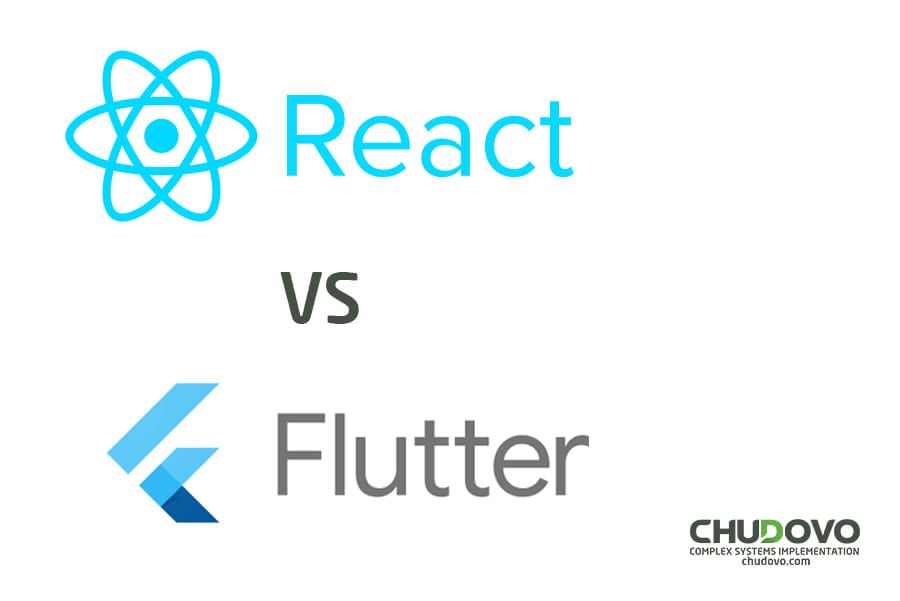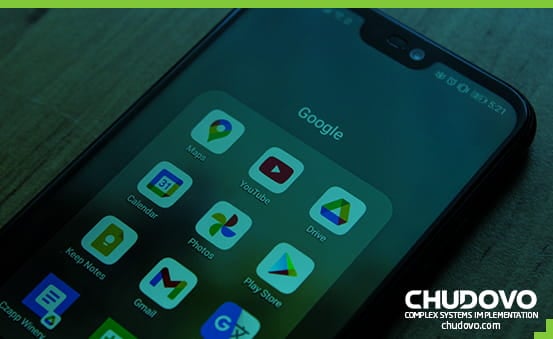React Native vs. Flutter: Choosing the Right Framework for Your Mobile App Development
In today’s digital age, mobile applications have become an integral part of our daily lives, with smartphone users growing each year and the availability of apps for almost everything. React Native and Flutter are cross-platform mobile app development frameworks that aid in the building of interactive apps for Android and iOS.
In this blog post, we will explore the benefits and drawbacks of each framework, compare their performance, and look at the facts you should consider when choosing them. Keep reading to make informed decisions on choosing the right framework for your mobile app development project.
Table of Contents
- What is React Native?
- What is Flutter?
- Brief History of React Native and Flutter
- How Cross-Platform Development Frameworks Work
- React Native vs. Flutter Features
- Pros and Cons of React Native and Flutter
- Which is Easier to Learn: Flutter or React Native?
- Backend for Flutter and React Native
- Factors to Consider When Choosing Between React Native and Flutter
- Conclusion
- Frequently Asked Questions

What is React Native?
React Native is a mobile application framework developed by Facebook. It allows developers to build mobile apps for iOS and Android platforms using JavaScript and React.
React Native allows for the development of cross-platform applications. This means that a single codebase can create applications for both iOS and Android platforms. It also provides access to native components for creating a smoother and more responsive user interface.
What is Flutter?
Flutter is a mobile application framework developed by Google. It allows developers to build natively compiled mobile apps for iOS, Android, and other platforms, such as web and desktop, using the Dart programming language.
Flutter is popular among developers for its ease of use, flexibility, and ability to create high-quality and visually appealing user interfaces.
Now, you know the definition and meaning of the two frameworks. Let’s look at their history and comparisons.
Brief History of React Native and Flutter
React Native and Flutter are two popular frameworks for building mobile applications.
React Native
Facebook released React Native in 2015 as a framework for building cross-platform mobile applications. It was built on top of the ReactJS library, which Facebook initially released for the building of web applications.
React Native’s use of JavaScript and a single code base that can run both on Android and iOS platforms to build high-performance and native-like mobile apps helped it gain popularity.
React Native is an excellent choice for building applications that demand several animations and complex interactions. Companies such as Facebook, Instagram, Walmart, Skype, Pinterest, Discord, Artsy, Bloomberg, Tesla, Wix.com, Airbnb, and Uber all use React Native.
Flutter
Google released Flutter in 2017 for building high-performance, cross-platform mobile applications. Unlike React Native, which was built on top of a web development library, Flutter was built from the ground up.
Flutter uses a new programming language called Dart, also developed by Google which is easy to learn and use. Flutter’s ability to create visually appealing UIs and build high-performance applications with a single codebase that can run on both iOS and Android platforms made it popular.
Flutter has a hot reload feature that allows users and developers to make changes to the code and also immediately see the changes in the app.
Flutter is more effective in the building of complex applications. Companies such as Google, Alibaba, Groupon, Sonos, EMAAR, Tencent, and Square all use Flutter.
How Cross-Platform Development Frameworks Work
Cross-platform development frameworks are not limited to React Native and Flutter. Others include Xamarin and Ionic, although React Native and Flutter seem to be the most popular tools.
Developers use these frameworks to create applications that can run across multiple platforms and operating systems. There’s no need for developers to write code for each platform. All required is to write code once and deploy them across different platforms such as the web, Android, and iOS.
So, cross-platform development frameworks help provide developers with a cost-effective and efficient means of developing applications and reducing development time. You must know that while each cross-platform development framework is similar in features and concepts; they differ in their mode of operation.
React Native:
React Native provides native code performance alongside the ease of development that React web brings. React Native works by using native components that are compiled into native code rather than using a WebView or HTML for rendering, which can result in faster performance.
With React Native, developers use native modules written in Java to access platform-specific features, such as the camera or location services.
Flutter:
Flutter, as a UI toolkit for building applications, has its own set of tools and widgets for building user interfaces rather than using platform-specific UI components. With its own tools, developers can create consistent and customizable interfaces across different platforms. It also contains pre-built Material Design allowing developers to easily create applications that look and feel like native Android and iOS apps.
Google’s Flutter is way faster than Facebook’s React Native. Flutter makes app development easier as codes can be written using Dart. The Dart programming language can be learned in a weekend or even hours, depending on the developer’s capacity.
React Native vs Flutter Features
Below is a breakdown of some of the key features of React Native and Flutter:
Language
- React Native is written in JavaScript seeing as JavaScript is one of the world’s most popular languages.
- Flutter uses a programming language called Dart. Google developed the Dart Programming Language in 2011, and although most developers rarely use it, it is quite easy to learn.
User Interface
- React Native uses native components in rendering its UI, resulting in a better performance when compared to using HTML. It offers external UI kits for building beautiful user interfaces across various platforms.
- Flutter has an in-built UI component (interactive and customizable widgets) that replaces the native components. They produce a consistent look and feel across the various platforms.
Code Reuse
- React Native and Flutter allow their developers to reuse code across multiple platforms.
Documentation
- React Native offers general documentation though not straightforward.
- Flutter provides easy-to-read documentation based on its format. Flutter’s documentation is straightforward and streamlined.
Integration and Platform Support
- React Native and Flutter allow for easy integration with existing native code, enabling access to device-specific features.
- React Native supports iOS, Android, and web platforms. Flutter supports iOS, Android, web, and desktop platforms.
Popularity
- React Native is a more popular mobile development application. Its language JavaScript is a widely known language, and several developers use this framework.
- Flutter has gained attention but is still new, and few developers are using it. Its programming language, Dart, is relatively new, making its adoption rate low.
Community Support
- React Native, being a popular framework, has a vast community. It has over 300,000 tagged questions on Stack Overflow.
- Flutter is a new framework with a small community though the rate of developers adopting is coming up. It has over 80,000 tagged questions on Stack Overflow.
Pros and Cons of React Native and Flutter
React Native and Flutter have their strengths and weaknesses, irrespective of community support. Several developers using React Native complain of its heavy run-time environment. This heavy run-time environment makes it difficult to pull off a pure native app performance.
In using Flutter, it doesn’t support existing JavaScript codebases and the sharing of components between apps for iOS and Android. Let’s talk in detail about the pros and cons surrounding these two frameworks.
Code Reusability Between Mobile Platforms
While most companies using React Native develop their mobile application on a particular platform, usually iOS, and then port it to the other platform; React Native has its own set of APIs for developing both iOS and Android. These companies can write shared components between the iOS and Android platforms.
In Flutter apps, you can’t share codes between your iOS and Android because it possesses codes that are platform specific. Most developers using Flutter use third-party libraries to make it easier to use the existing native components.
Debugging
Flutter has an in-built debugging environment to identify and fix performance issues. The hot reload feature on Flutter allows developers to repeat their codes, making debugging effortless.
React Native also has its own debugging environment for the identification and fixing of performance issues.
Now, while Flutter’s debugging environment is different from other platforms; it can be tricky to use. React Native can be slow in debugging, and some features may not be available to some platforms.
User Interface Development
Flutter provides in-built widgets for rendering UI meaning you can reuse existing iOS and Android codes when building applications using Flutter. With Flutter, you can also use third-party libraries, making it easier to reuse existing native components.
React Native offers certain APIs for manually building the bridge between your native UI components and the JavaScript code that will handle rendering them. React Native also includes a bridge that enables you to reuse existing iOS and Android code as JavaScript modules.
App Size
Flutter apps are large when you compare them with other frameworks. However, using a single code base helps it save space.
React Native is smaller than most native apps. The small size could be attributed to the use of JavaScript. React Native apps usually have a JavaScript runtime weighing 300 kb zipped.
Native Performance
Native performance refers to how closely an app can mimic the performance of a native app built using platform-specific languages and tools. The closer an app’s performance to that of a native app, the better the user experience.
React Native uses native components allowing for a fast rendering and smooth user experience. It also allows for the use of native modules written in Java, Swift, or Objective-C to provide additional functions.
Flutter uses a reactive programming model allowing for fast rendering and smooth animations. It also uses Ahead of Time (AOT) compilation, which compiles the code into native machine code, resulting in faster app startup and performance.
For React Native, there may be compatibility issues with some native components resulting in performance issues. Flutter’s reactive programming model can result in a steep learning curve for developers not familiar with it. Flutter’s Ahead Of Time compilation can also result in larger app sizes with an impact on download times and storage spaces.
Minimal Required SDK Version:
In building mobile applications, developers are to target the latest SDK versions available at the time for the best performance. Flutter can run on iOS 8 and Android version 21, and newer versions. React Native is usually built against iOS 9+ or Android 5.0+ SDK. Flutter and React Native Apps can work on older versions of iOS and Android, but with a limitation to the availability of features.
Which is Easier to Learn – Flutter or React Native?
The easy and difficult level of learning either the Flutter or React Native framework depends on some factors, such as the developer’s expertise. Both frameworks have a large community willing to offer assistance and help to new developers. Asides from the communities, there are resources and documentation available to help developers get started and learn the framework.
React Native uses a familiar web development syntax (Java), making it easier for web developers to transition to mobile development. While Flutter uses a unique programming language which may be easier for developers with experience.
For a new developer in the industry, React Native comes highly recommended. Asides from the familiar language, it comes with a set of predefined components for developing iOS and Android apps. It allows you to study one item at a time without having to worry about learning all the APIs used for displaying views.
A developer in the industry with coding experience may go for the Flutter framework over React Native. The programming language Dart, though new, is easy to learn.
The ease of learning Flutter or React Native depends on the developer’s background and preferences. Both frameworks have incredible benefits and drawbacks that can impact the choice of usage.
While Dart is a new but easy-to-use language, JavaScript is not new but tricky to use. The level of easiness and difficulty can be defined by the developer’s capacity and ability.
Backend for Flutter and React Native
Any app that demands user identification, data storage, or communication with third-party services must have a backend. For Flutter and React Native apps, the backend manages all data requests and answers, acting as a liaison between the app and the server. Since cross-platform apps need a common data source that can be accessed from both iOS and Android devices, this is particularly crucial.
There are several backend options for Flutter and React Native apps, ranging from traditional server-side frameworks to cloud-based services. A few options are well suited to each.
Remember, your choice of backend technology depends on the application’s specific needs and your preferences.
Backend for Flutter
Google’s firebase is the best choice for a Flutter application. Firebase is a popular backend solution for mobile apps. It offers a suite of services, including authentication, a real-time database, cloud storage, and hosting. Other backend options for Flutter include AWS Amplify, GraphQL, and Parse Server.
Backend for React Native
Node.js is a popular backend for React Native. It provides a flexible and scalable architecture that can handle complex data requests and responses, though it requires more setup and configuration compared to other cloud-based services.
With Node.js, developers can build backed systems that can handle a large amount of traffic. Other backend options for React Native include AWS Amplify and Google Cloud Functions.

Certified engineers
Convenient rates
Fast start
Profitable conditions
Agreement with
EU company
English and German
speaking engineers
Factors to Consider When Choosing Between React Native and Flutter.
You must make an informed decision when choosing the right framework for your mobile app development. Your choice of framework depends on the following factors:
Project Requirements
You must consider the requirements of your project when choosing between Flutter and React Native. Both have strengths and weaknesses that can impact your project. Consider the following about your project requirement:
1. Development Time and Cost
The development time and cost are important factors to consider when choosing a framework. Flutter and React Native offer various features that can help developers build high-quality apps quickly and efficiently. However, the development time and cost may vary depending on the app’s complexity.
Flutter has a reputation for faster development times and lower costs due to its use of a single codebase and its hot reload feature, which allows developers to see changes in real-time. React Native also offers a single codebase, just like Flutter, but it requires more time and effort to set up and configure.
2. User Experience and Performance
Flutter and React Native offer tools and features to help developers create high-performance, visually appealing apps.
Flutter offers customizable widgets and a flexible layout system that can adapt to different screen sizes and orientations. React Native uses native components and modules, which can result in better performance and a more native look and feel.
3. Cross-Platform Support
Flutter and React Native allow developers to create apps for multiple platforms. However, React Native is a better choice if your target is iOS and Android platforms because of its platform-specific features.
4. Integration with Third-Party Libraries
React Native has a more significant community and a vast collection of pre-built components and libraries, making development easier. Flutter is newer, and its community is growing fast, but it still has a smaller community.
5. Development Team Experience
Your development team’s experience is another crucial factor to consider when making your choice. Each framework has its specific skill set, and your choice of framework determines how effectively your team will work.
For your development team’s experience, consider the following:
Programming Language
React Native uses JavaScript, which is widely used for web development, whereas Flutter uses Dart, a language created by Google specifically for Flutter.
Development Environment
Flutter has a built-in UI testing tool and an integrated development environment (IDE) called “Android Studio.” While React Native, on the other hand, relies on external tools and libraries.
Learning Curve
Some developers say React Native is easier to learn as it is built on JavaScript which is used in web development.
6. Future Scalability
As a developer, while making your choice, you want to choose a framework that can handle future changes and growth without requiring significant rework. Here are a few considerations you must take into account:
Community Support
Flutter and React Native have a strong community support system. React Native has a larger community giving access to developers and access to its pre-built components and libraries.
Maintenance and Support
Flutter and React Native are well maintained by their respective companies; Google and Facebook. Flutter is backed by Google, which has a good reputation for maintaining its products over a long time. Flutter also has the hot reload feature, which allows you to develop and test the app, reducing maintenance cost and time.
Conclusion
React Native and Flutter offer efficient ways to build mobile apps. Choosing the right framework for your mobile app development project depends on several factors, such as project requirements, development team experience, and future scalability. Ultimately, the choice between React Native and Flutter depends on these factors.
As a developer, you must carefully consider the above factors and evaluate the strengths and weaknesses of each framework. The considerations and evaluations will help you make an informed decision and ensure a successful app development project.
However, If you’re looking for a mature and established framework with a large community and a wide range of third-party libraries, React Native may be the best choice. But, if you prioritize performance and want to build beautiful user interfaces without relying on third-party libraries, Flutter may be the better choice.
Frequently Asked Questions
What is the benefit of using React Native Framework?
React Native has a large and active community, making it easy to find resources and support. There is also fast development time and low cost.
What is the benefit of using Flutter?
Flutter has a strong focus on performance and allows for beautiful and responsive user interfaces without relying on third-party libraries. There is also faster development time and lower cost.
Can I build apps for both iOS and Android using React Native and Flutter?
Yes, both React Native and Flutter allow developers to build apps for both iOS and Android platforms using a single codebase.
What programming language does React Native and Flutter use?
React Native uses JavaScript, while Flutter uses Dart.
If you need highly qualified and proven mobile app developers at the right price for your project, contact us now!




